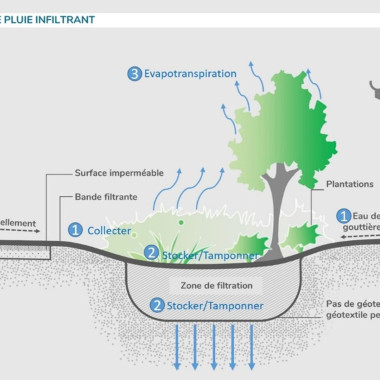Water Smart Cities Project
Article

Article

The adventure began in 2009, when we returned from a conference where the subject was raised, and integrated by R&D as a technology of the future: the first pilots and the first granules, imperfect but promising. The desire to continue this work and the development of molecular biology techniques led us to carry out an initial research project co-funded by the SPW (Collective research BIAGRA - BIomasse Aérobie GRAnulaire - 2013-2015) in collaboration with the microbiology department at UCL.
Following very encouraging initial results, exelio entered into a partnership with CEBEDEAU to develop a granular sludge process in an SBR configuration. At the end of the research (2016 - 2019), the GRASS® (Granulated Activated Sludge System) process was born. A compact process with a high sedimentation rate, it has demonstrated excellent industrial wastewater purification capacity (including N and P), with a significant reduction in energy consumption. BeFLOW® is the second stage in CEBEDEAU's research into granular sludge, in partnership with John Cockerill (2019-2021). The challenge of the BeFLOW® research was to succeed in developing granular sludge for activated sludge plants operating in continuous mode, with more diluted urban wastewater. This did not exist at the time: during renovation, the only granular applications consisted of transforming conventional plants into sequential plants.
All this was developed over several years at CEBEDEAU on pilots of up to 500 L before being applied in real conditions on platforms of several tens of m³, built by exelio (GRASS®) and John Cockerill (BEFLOW®). The latter, still installed at the Namur wastewater treatment plant, delivered its final results at the end of 2021.
The two main axes of granulation (metabolic, storage and physical, sorting of bacterial clusters) must therefore be controlled under conditions of variable pollutant and hydraulic load. Carbon storage in the form of PHA is well known in the biological phosphorus removal process, but it is also accompanied by the production of external polymerised substances (EPS), which play a major role in structuring the biomass into granules. By setting up a high-load anaerobic zone whose volume is adapted to the characteristics of the influent, we have been able to control the feast/famine process and therefore the storage.
The strategy for applying the second selection pressure depends on whether the process is sequential or continuous. In the second case (Beflow® process), a biomass classifier is inserted upstream of the final decanter, which polishes the effluent.
In the end, the sludge develops a much better sedimentation rate, with a significant impact on the volume of the works. In addition, biological dephosphatation is more effective (see control of stockpiling, so less or no reagents) and selective control of sludge purging offers prospects not only in terms of physical selection but also metabolic selection.
Article

Article

Event
